Poison Ivy - Manitoba
(Toxicodendron
rydbergii (Small ex Rydb.) Greene)
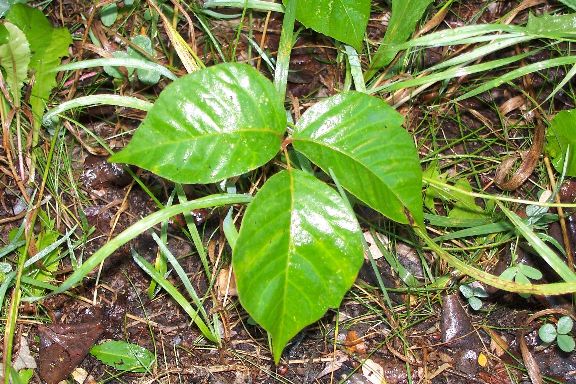
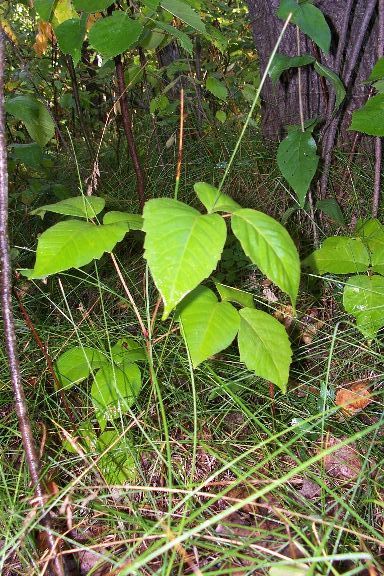
Poison-Ivy is very common across much of southern Manitoba. It is
quite variable in size, colour, and leaf shape. It is a short woody
stemmed plant with with few or no branches typically standing less
than 30cm (although in rich moist woodlands specimens of almost a meter have been seen). The leaves, 3-12cm+ in length, are borne near the top of
the stem, have long petioles and are divided into three parts. Leaf
margins may be lobbed, dentate, or entire. The flowers are tiny
white/yellow and grouped in axillary panicles. Berries are
clustered off-white (ivory) and usually remain on the stem after the
leaves have fallen. In general remember: "Leaves of three, let
it be; berries white, danger in sight."
The name comes from:
Toxicodendron, from the Latin toxicum, "poison", and the Greek dendron, "tree"; hence "poison tree"
rydbergii, from the Latin, "Rydberg's"; named after Per Axel Rydberg (1850-1931), an expert on Western flora.
Common names include: Western Poison Ivy, Ryberg's Poison Ivy, Non-Climbing Poison Ivy
Poison-Ivy is common in open woodlands with a moderate amount of
sunlight dominated by Bur Oak (Quercus macrocarpa),
Green Ash (Fraxinus pennsylvanica), Green Ash/American Elm
(Ulmus americana), Bur Oak/Green Ash, or Quaking Aspen
(Populus tremuloides). Generally it is found along the edges
of open or disturbed areas. It grows in a wide range of moisture and
soil conditions from dry gravel ridges (where it is relatively
small) to rich mesic lowlands with periodic flooding (where the plants
reach their largest size).
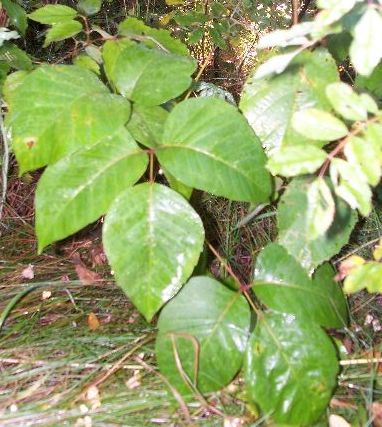 Poison-Ivy Dermatitis
is a delayed hypersensitivity, allergic reaction, caused by contact
with the oil urushiol which is released when the plant is damaged
(even slightly). Sensitivity to the oil increases with additional
exposure - if you have never had the rash count yourself lucky but
watch out since you might still get it. Approximately 85 percent of the
population will develop an allergic reaction. The rash can appear
within a few hours (typical 12-48hrs) or as much as 10 or more days
after contact and last as long as 3-4 weeks. Apparently only humans
react to poison ivy.
Poison-Ivy Dermatitis
is a delayed hypersensitivity, allergic reaction, caused by contact
with the oil urushiol which is released when the plant is damaged
(even slightly). Sensitivity to the oil increases with additional
exposure - if you have never had the rash count yourself lucky but
watch out since you might still get it. Approximately 85 percent of the
population will develop an allergic reaction. The rash can appear
within a few hours (typical 12-48hrs) or as much as 10 or more days
after contact and last as long as 3-4 weeks. Apparently only humans
react to poison ivy.
The oil can last a significant period of time on other objects such
as garden tools, pet fur, sports equipment, fishing/hunting gear, and
clothing. Even handling dried plant material, leaves, roots, etc...
can still cause a rash. Smoke from fires with poison-ivy can also
cause a reaction in many people. Oozing liquid from rashes does not
spread the rash. New rashes are often caused by contacting items that
had not been cleaned after the initial exposure. A friend of mine
repeatedly suffered from the rash because he had gotten the oil on the
steering wheel of his car after working in the field. Every time he
drove the car he spread more oil around until he realized what was
happening and washed the inside of his car.
The best way to avoid the rash is to recognize the plant and avoid
it. If you do contact or damage the plant then wash with soap and lots of
water as soon as possible (within 10 minutes) to remove the oils. Some
sources say that washing with lots water is enough and that using soap may
spread the oil; swimming or wading in a fast moving stream works well.
There are a number of barrier creams made specifically for protection
from poison ivy. The effectiveness of the creams is quite variable (59%-9%
protection) so do some homework before you buy. The American Academy
of Dermatology suggests using creams that contain bentoquatam. If you
are in an area where you are likely to contact the plants wear long
sleeves and pants - remember to wash your clothes. Wet
clothing (including sweat soaked) does not make a good barrier.
The rash will usually go away on its own, but it can be
uncomfortable. Using a wet cold compresses can soothe the rash. Use
of calamine lotion solution helps dry it out. Oral antihistamines can
also be helpful in controlling itchiness. If the rash is severe or on
your face or other sensitive areas of your body then you should see a
physician. Medications, such as antihistamines and corticosteroids may
be prescribed. There are a number of treatments on the market -
unfortunately I can't recommend any since I have not used (or even
seen) most of them but there may be some useful information from the
links or articles below.
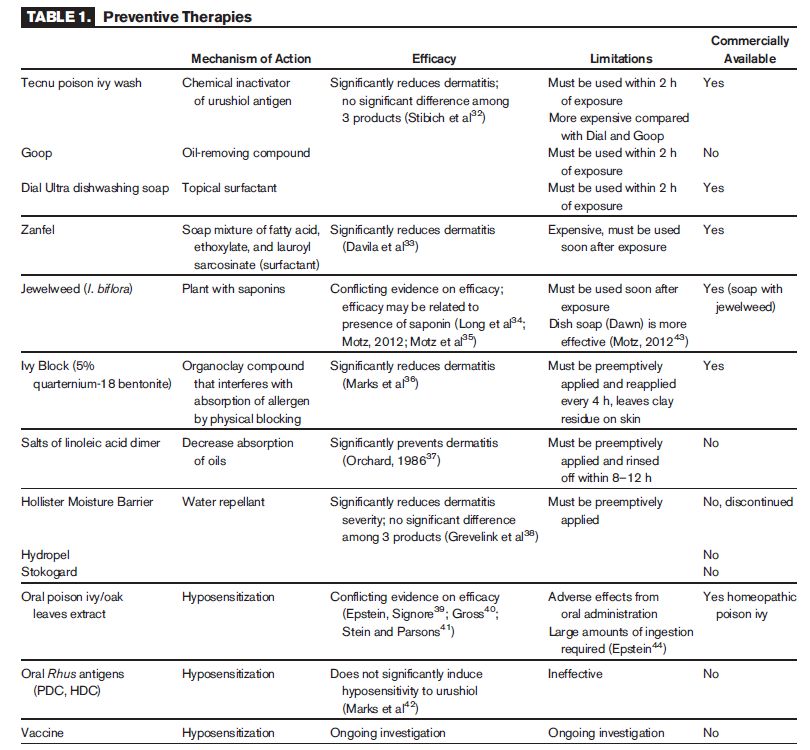
from: Kim, Yesul MD, etal. Poison Ivy, Oak, and Sumac Dermatitis: What Is Known and What Is New?. Dermatitis: 5/6 2019 - Volume 30 - Issue 3 - p 183-190
Some Images of Poison Ivy
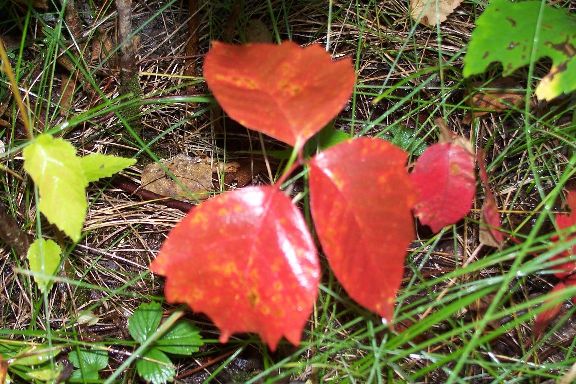
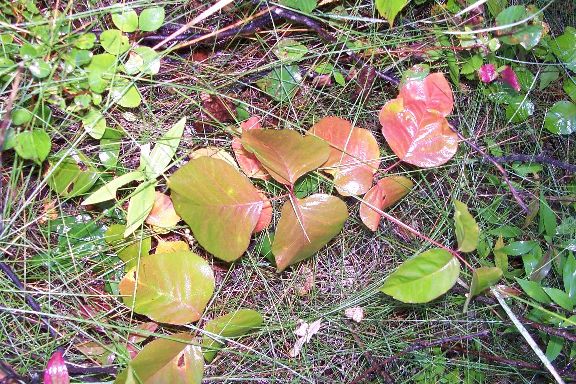
The berries of Poison-Ivy are a white or cream colour and can stay
on the short stems from late summer through the fall and winter.

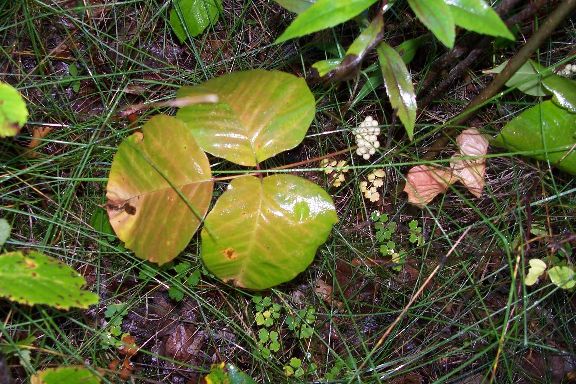
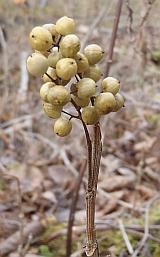
Plants often confused with PI
There are a number of plants that are often confused with poison
ivy. Here are a few common examples. All of these plants often grow
with or near poison ivy as well - if you see one you often will see
the other.
Manitoba Maple Saplings have three leaflets and are on a woody stem.
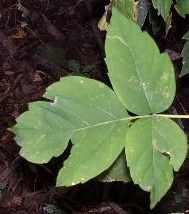
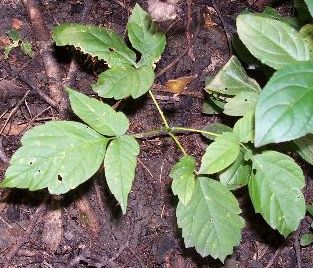
Bur oak saplings have a woody stem and irregular shaped leaves, but
there is only one leaflet.


Wild Sarsaparilla is commonly confused with poison ivy. Look for
more than one leaflet, the leaves are not shiny, and the stem is not
woody.
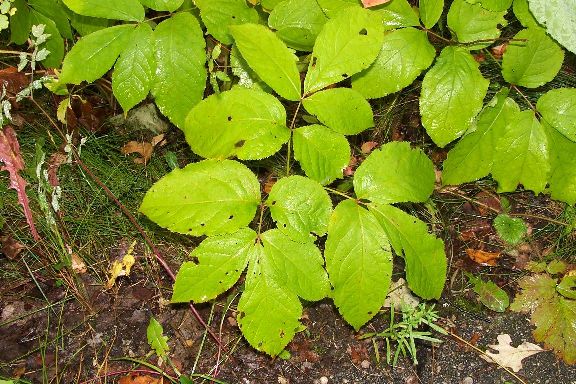
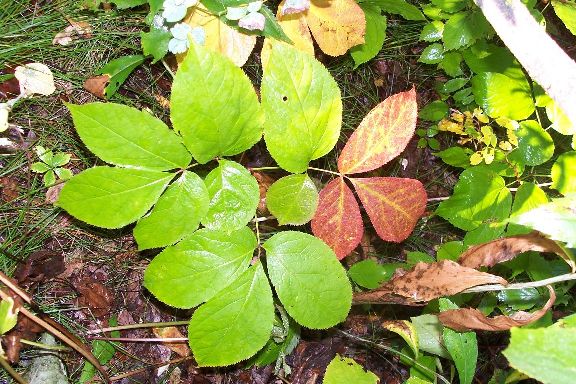
Strawberries are nice to eat and grow close to the ground. They do have three
leaflets but the surface is not shiny, and may have a hairy appearance.


but be careful because sometimes they grow together with PI.
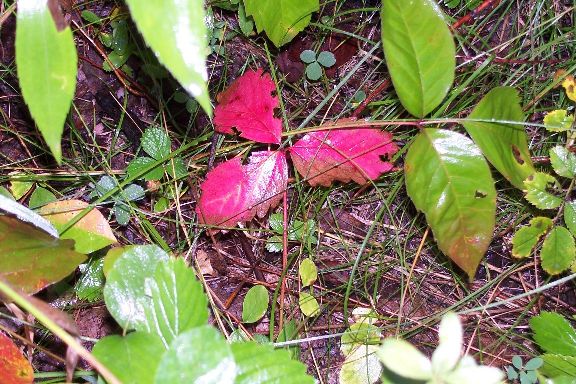
Virginia creeper has shiny leaves but is usually darker green, in Manitoba
it is a vine, and usually has more than three leaflets.
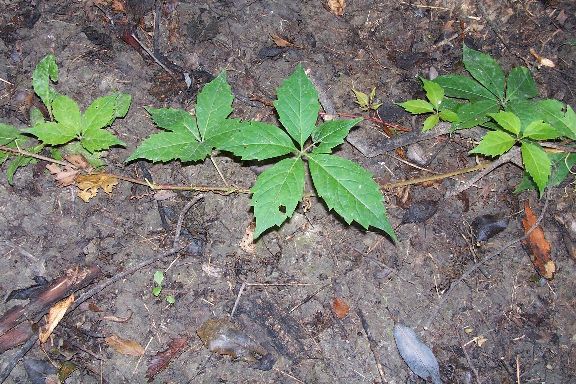
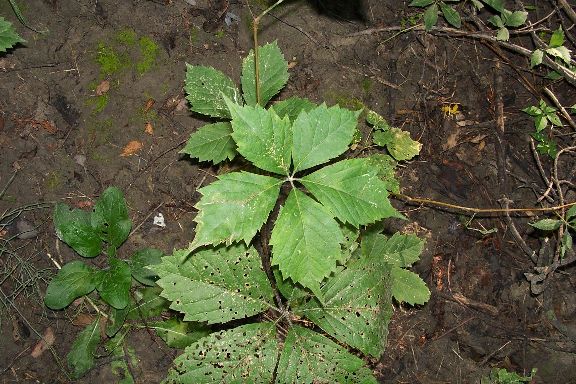
Hog peanut also has three leaflets but it does not have a woody stem and is
generally smaller.
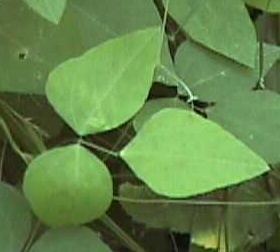
Other species that might be mistaken include: Boston or Japanese ivy, Fragrant sumac, skunkbush sumac, raspberries, English ivy, Ash seedlings.
Reference Information:
Some websites with information on poison ivy:
If you like journal articles here is a small sample. The papers by
Gladman (2006) and Kim (2019) provide good overview information.
- Allen, P.L. Leaves of three, let them be: if it were only that easy! Pediatric nursing
Volume 30, Issue 2, March 2004, Pages 129-135 PubMed ID: 15185735
- Boelman, D.J. Emergency: Treating poison ivy, oak, and sumac.
American Journal of Nursing Volume 110(6), June 2010, pp 49-52
PubMed ID: 20505463
- Garner, L.A. Poison ivy, oak, and sumac dermatitis: Identification,
treatment, and prevention. Physician and Sportsmedicine Volume 27,
Issue 5, May 1999, Pages 33-43
- Gladman, Aaron C. Toxicodendron Dermatitis: Poison Ivy, Oak, and Sumac. Wilderness and Environmental Medicine
Volume 17, Issue 2, 2006, Pages 120-128. PubMed ID: 16805148
- Guin, J.D. Treatment of toxicodendron dermatitis (poison ivy and poison oak). Skin therapy letter Volume 6, Issue 7, April 2001, Pages 3-5 PubMed ID: 11376396
- McGovern, T.W., Steven R. LaWarre, and Chad Brunette. Is it, or isn't it? Poison ivy look-a-likes. American Journal of Contact Dermatitis Volume 11, Issue 2, 2000, Pages 104-110 PubMed ID: 10908180
- Tanner, T.L. Rhus (toxicodendron) dermatitis. Primary Care - Clinics in Office Practice Volume 27, Issue 2, 2000, Pages 493-502 PubMed ID: 10815057
- Kim, Yesul MD, etal. Poison Ivy, Oak, and Sumac Dermatitis: What Is Known and What Is New?. Dermatitis: 5/6 2019 - Volume 30 - Issue 3 - p 183-190 PubMed ID: 31045932
Synonyms:
- Rhus radicans L. var. rydbergii (Small ex Rydb.) Rehd.
- Rhus radicans L. var. vulgaris (Small ex Rydb.) Rehd.
- Rhus toxicodendron L. var. vulgaris Michx.
- Toxicodendron crenatum Mill., nom. utique rej.
- Toxicodendron desertorum Lundell
- Toxicodendron radicans (L.) Kuntze var. rydbergii (Small ex Rydb.) Erskine
- Toxicodendron volubile Mill., nom. utique rej.
Just to cause more confusion Western Poison-Ivy (Toxicodendron rydbergii) has been found to hybridize with eastern
poison ivy (Toxicodendron radicans (L.) Kuntze) - the
kind that climbs. Eastern poison ivy has not been found in
Manitoba; it has been found in some parts of Minnesota and
southern Ontario.
Poison Oak:
Poison Oak does not grow in Manitoba. (yes that is a
period, end of discussion, don't bring it up again). On the
other hand all of the species look similar, contain the same oil,
and cause the same rash - does it matter that much?.
- Toxicodendron diversilobum(Torr. & Gray) Greene (Pacific
poison oak) is found on the west coast. It is rare in British
Columbia only found on the Gulf Islands, southeast
Vancouver Island and possibly Howe Sound. Its conservation status is
considered 'Imperiled' in BC (S2S3).
- Toxicodendron pubescens P. Mill. (Atlantic poison
oak) is found in the south eastern United States - on the
Atlantic coast.
Some organizations and people use Poison Oak interchangeably with Poison Ivy. Poison Ivy (Toxicodendron rydbergii) is extremely variable in size and leaf shape leading many to believe there are different species found in Manitoba. The long and short is these plants should be avoided as they can cause very serious dermatitis.
Finally just for fun:
Geocaching: This write-up was created as part of a geocache called
PI in the Woods (GC15J8G)
on geocaching.com. At the cache itself there is a brief information sheet about poison
ivy
Back to Home Page
If you have any questions or comments please send me email at:
burc...@cc.umanitoba.ca
Last modified: Sat April 25 2020
 Poison-Ivy Dermatitis
is a delayed hypersensitivity, allergic reaction, caused by contact
with the oil urushiol which is released when the plant is damaged
(even slightly). Sensitivity to the oil increases with additional
exposure - if you have never had the rash count yourself lucky but
watch out since you might still get it. Approximately 85 percent of the
population will develop an allergic reaction. The rash can appear
within a few hours (typical 12-48hrs) or as much as 10 or more days
after contact and last as long as 3-4 weeks. Apparently only humans
react to poison ivy.
Poison-Ivy Dermatitis
is a delayed hypersensitivity, allergic reaction, caused by contact
with the oil urushiol which is released when the plant is damaged
(even slightly). Sensitivity to the oil increases with additional
exposure - if you have never had the rash count yourself lucky but
watch out since you might still get it. Approximately 85 percent of the
population will develop an allergic reaction. The rash can appear
within a few hours (typical 12-48hrs) or as much as 10 or more days
after contact and last as long as 3-4 weeks. Apparently only humans
react to poison ivy.


















